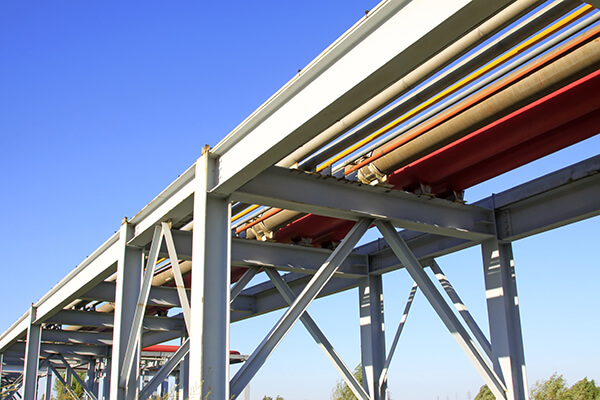Tag Archive for: oil barrel
Geologists say a new survey shows an oilfield in west Texas dwarfs others found so far in the United States, according to the US Geological Survey.
The Midland Basin of the Wolfcamp Shale area in the Permian Basin is now estimated to have 20 billion barrels of oil and 1.6 billion barrels of natural gas, according to a new assessment by the USGS.
That makes it three times larger than the assessment of the oil in the mammoth Bakken formation in North Dakota.
The estimate would make the oilfield, which encompasses the cities of Lubbock and Midland — 118 miles apart — the largest “continuous oil” discovery in the United States, according to the USGS.
“This oil has been known there for a long time — our task is to estimate what we think the volume of recoverable oil is,” assessment team member Chris Schenk told CNN – affiliate KWES Wednesday.
The term “continuous oil” refers to unconventional formations like shale, in which the oil exists throughout the formation and not in discrete pools. The USGS estimates how much oil is considered to be undiscovered but technically recoverable.
“Even in areas that have produced billions of barrels of oil, there is still the potential to find billions more,” Walter Guidroz, coordinator for the USGS Energy Resources Program said in a statement. “Changes in technology and industry practices can have significant effects on what resources are technically recoverable, and that’s why we continue to perform resource assessments throughout the United States and the world.”
Oil has been produced in the Wolfcamp area since the 1980s by traditional vertical wells — but now companies are using horizontal drilling and hydraulic fracturing to tap the continuous oil reserve. More than 3,000 horizontal wells are currently operating, according to the USGS.
Morris Burns, a former president of the Permian Basin Petroleum Association, told KWES the low price of oil — currently around $46 a barrel — means the oil will sit underground for the foreseeable future.
“We are picking up a few rigs every now and then but we won’t see it really take off until we (get) that price in the $60 to $65 range,” Burns told the station.
“When we talk about that many millions of barrels of oil in the ground, that doesn’t mean we can recover it all. We recover in the neighborhood of 50 to 60 percent,” Burns said.
Last spring, CNN reported that “fracking” now accounted for more than half of all U.S. oil output. Back in 2000, there were just 23,000 fracking wells pumping about 102,000 barrels of oil a day. Last March there were 300,000 fracking wells, churning out 4.3 million barrels per day.
The fracking production, led by Permian Basin, Bakken formation and Eagle Ford, also in Texas, caused oil prices to tumble — making the $100 barrel ancient history — to as low as $25 a barrel early this year.

Copyright: CNN
Oil prices are depressed, but Texas shale has never been more valuable.
A recent spate of land deals in the sprawling Permian Basin illustrates a counter-intuitive trend: Real estate in the country’s most active oil field is even more expensive today than it was before commodity prices crashed.
QEP Resources Inc. agreed to pay a price that works out to close to $60,000 per net acre in June for a slice of the Permian, in the basin’s priciest land deal on record.
That’s more than double the average $30,000 per net acre explorers paid for Permian land during the first nine months of 2014, when oil topped $100 a barrel, according to data from Citigroup Inc. Oil has been hovering at $45 to $50 per barrel since mid-August.
Over the past few months, at least four other explorers agreed to pay more than $30,000 per net acre to expand in the Permian: Concho Resources Inc., Parsley Energy Inc., SM Energy Co., and Silver Run Acquisition Corp., according to data compiled by Bloomberg.
“The valuations are pretty lofty,” said Bryan Lastrapes, managing director at Moelis & Co. “When you look at the prices being paid for a flowing barrel, they are higher than when oil was at $100.”
Unusual Geography
The obvious question: With oil so much cheaper today, why has Permian land become so pricey? There are a few explanations. The first comes down to the same reason a dingy is more valuable on a sinking ship.
“It’s about scarcity,” said Bruce Cox, global head of energy acquisitions and divestitures with Credit Suisse Group AG.
The Permian is one of the few places in the U.S. where drilling remains profitable amid low prices, thanks to its unusual geography, in which different layers of oil- and gas-soaked rock are stacked like layers in a cake, he said. An explorer can drill multiple horizontal wells after digging straight down.
“What you can’t find in most plays is the Permian hydrocarbon column,” Cox said. “Companies can drill two to four times as many wells over a 10-year development period” in the Permian than in other basins.
QEP Rationale
This is a key part of the rationale QEP used to justify the price it agreed to pay for the 9,400 net acres in the Permian in June.
The company told investors it sees a chance to drill more than 400 horizontal wells along four different benches of shale, more than a half-mile down, where it has already determined there is oil. It sees additional upside potential drilling riskier, wildcat wells on three other benches. So it isn’t buying just one field, but as many as seven.
That deal also addresses a perpetual critique from investors that QEP isn’t big enough in the Permian, by increasing its position there by 50 percent, Richard Doleshek, QEP’s chief financial officer, said in August.
“From a dollar-per-acre standpoint, we heard a lot of conversation about how that was a big number,” Doleshek said during a presentation at an oil and gas conference sponsored by Enercom Inc., according to a transcript compiled by Bloomberg.
“When you look at it on a target basis, it’s relatively reasonable,” he said. “It’s pristine acreage.”
Lower Costs
Another factor driving up Permian land prices is the fact that it has some of the lowest break-even costs in the world. The area has more than a half-dozen fields where drilling can stay profitable even when oil falls below $30 a barrel, according to data compiled by Bloomberg.
The oil rout has set off a land grab for that reason, said Ron Gajdica, co-head of energy acquisitions and divestitures with Citigroup.
“When oil prices were high, there was a high supply of acreage with economic drilling opportunities,” he said. “Now, in a $40 to $50 oil price environment, acreage with economic locations is scarcer. There are only a limited amount of opportunities and many of them are in the Permian.”
A couple of other things are driving up the price of Permian land. First, development costs have come down sharply during the downturn, thanks to lower service costs, technological advances and more efficient techniques, Gajdica said. That means explorers can justify paying higher prices for land.
Second, Wall Street is helping the trend. Publicly traded Permian explorers such as Concho and Parsley trade at a premium to other shale players. They paid for their recent acquisitions with stock. Since their currency is worth more, they can afford to pay up.
In addition, other explorers with operations elsewhere, such as QEP and SM, saw their share prices spike after striking deals in the Permian, which could spur even more dealmaking in the area.
“The market tends to respond favorably when these Permian deals are announced,” Gajdica said.

Scroll to top


